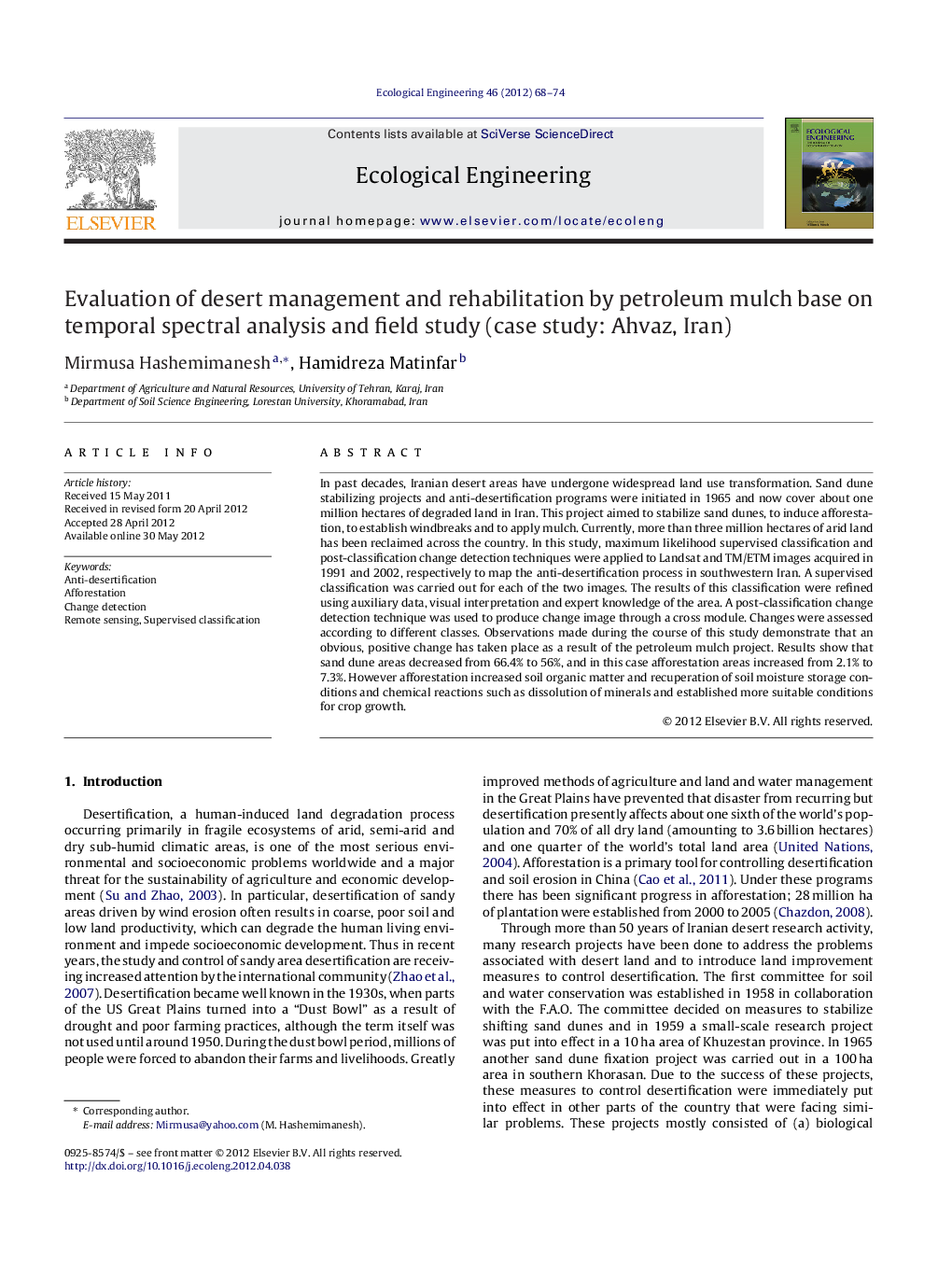| Article ID | Journal | Published Year | Pages | File Type |
|---|---|---|---|---|
| 4389980 | Ecological Engineering | 2012 | 7 Pages |
In past decades, Iranian desert areas have undergone widespread land use transformation. Sand dune stabilizing projects and anti-desertification programs were initiated in 1965 and now cover about one million hectares of degraded land in Iran. This project aimed to stabilize sand dunes, to induce afforestation, to establish windbreaks and to apply mulch. Currently, more than three million hectares of arid land has been reclaimed across the country. In this study, maximum likelihood supervised classification and post-classification change detection techniques were applied to Landsat and TM/ETM images acquired in 1991 and 2002, respectively to map the anti-desertification process in southwestern Iran. A supervised classification was carried out for each of the two images. The results of this classification were refined using auxiliary data, visual interpretation and expert knowledge of the area. A post-classification change detection technique was used to produce change image through a cross module. Changes were assessed according to different classes. Observations made during the course of this study demonstrate that an obvious, positive change has taken place as a result of the petroleum mulch project. Results show that sand dune areas decreased from 66.4% to 56%, and in this case afforestation areas increased from 2.1% to 7.3%. However afforestation increased soil organic matter and recuperation of soil moisture storage conditions and chemical reactions such as dissolution of minerals and established more suitable conditions for crop growth.
